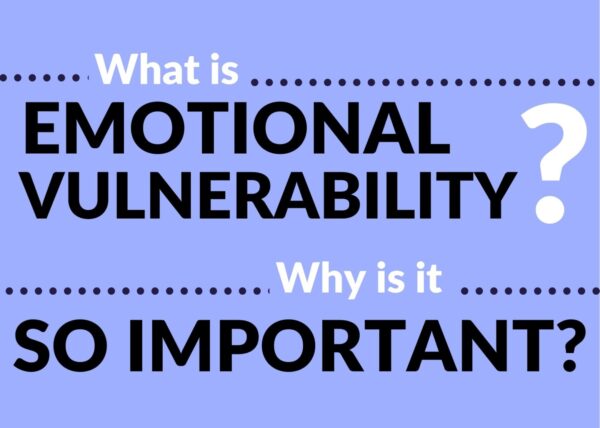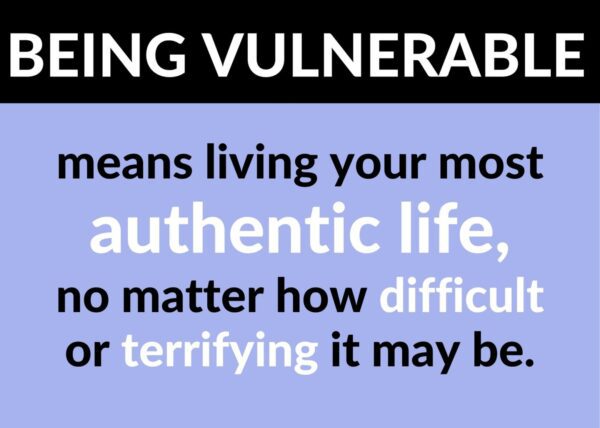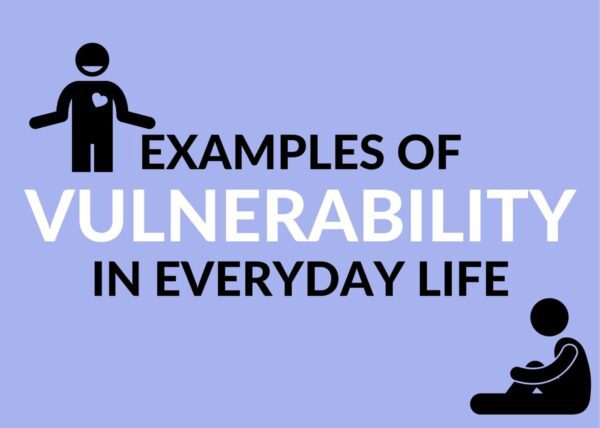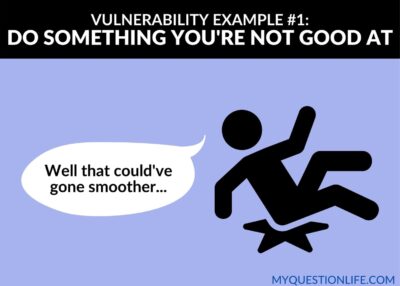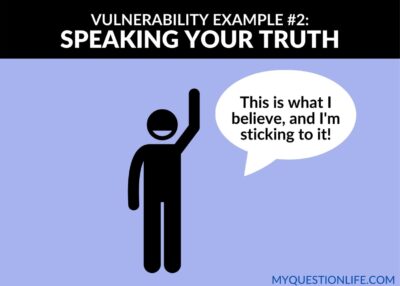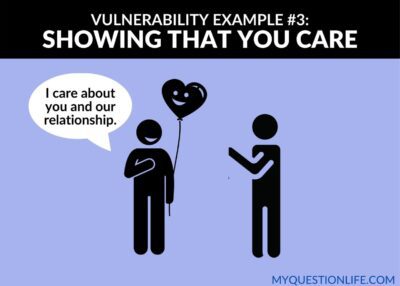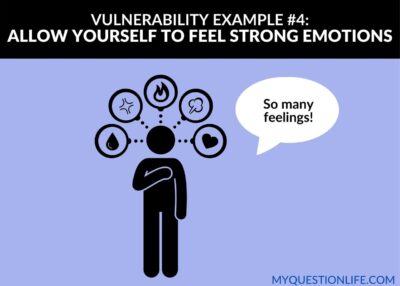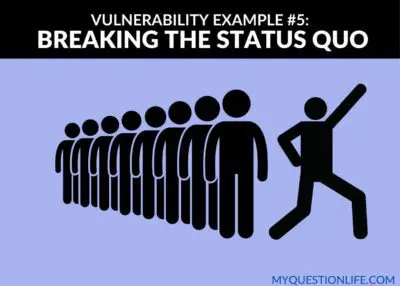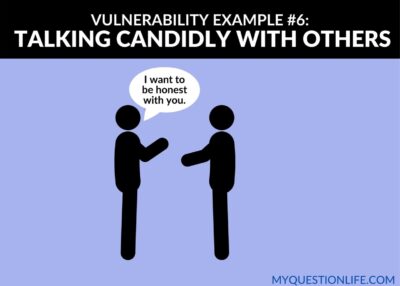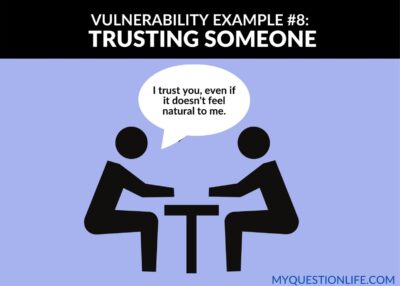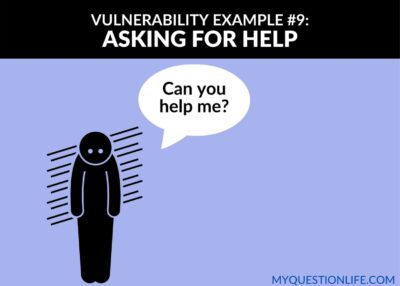[fusion_builder_container admin_label=”Large Screen text” hundred_percent=”no” hundred_percent_height=”no” hundred_percent_height_scroll=”no” hundred_percent_height_center_content=”yes” equal_height_columns=”no” menu_anchor=”” hide_on_mobile=”small-visibility,medium-visibility,large-visibility” status=”published” publish_date=”” class=”@media only screen and ( min-width: 800px ) {padding-top: 0px; padding-right: 5px; padding-bottom: 0px; padding-left: 5px; }” id=”” link_color=”” link_hover_color=”” border_color=”” border_style=”solid” margin_top=”” margin_bottom=”” padding_top=”” padding_right=”0″ padding_bottom=”” padding_left=”7%” gradient_start_color=”” gradient_end_color=”” gradient_start_position=”0″ gradient_end_position=”100″ gradient_type=”linear” radial_direction=”center center” linear_angle=”180″ background_color=”” background_image=”” background_position=”center center” background_repeat=”no-repeat” fade=”no” background_parallax=”none” enable_mobile=”no” parallax_speed=”0.3″ background_blend_mode=”none” video_mp4=”” video_webm=”” video_ogv=”” video_url=”” video_aspect_ratio=”16:9″ video_loop=”yes” video_mute=”yes” video_preview_image=”” filter_hue=”0″ filter_saturation=”100″ filter_brightness=”100″ filter_contrast=”100″ filter_invert=”0″ filter_sepia=”0″ filter_opacity=”100″ filter_blur=”0″ filter_hue_hover=”0″ filter_saturation_hover=”100″ filter_brightness_hover=”100″ filter_contrast_hover=”100″ filter_invert_hover=”0″ filter_sepia_hover=”0″ filter_opacity_hover=”100″ filter_blur_hover=”0″ type=”legacy”][fusion_builder_row][fusion_builder_column type=”1_1″ layout=”1_1″ spacing=”” center_content=”no” link=”” target=”_self” min_height=”” hide_on_mobile=”small-visibility,medium-visibility,large-visibility” class=”” id=”” background_color=”” background_image=”” background_image_id=”” background_position=”left top” background_repeat=”no-repeat” hover_type=”none” border_color=”” border_style=”solid” border_position=”all” border_radius=”” box_shadow=”no” dimension_box_shadow=”” box_shadow_blur=”0″ box_shadow_spread=”0″ box_shadow_color=”” box_shadow_style=”” padding_top=”” padding_right=”” padding_bottom=”” padding_left=”0px” margin_top=”” margin_bottom=”” animation_type=”” animation_direction=”left” animation_speed=”0.3″ animation_offset=”” last=”true” first=”true” border_sizes_top=”0″ border_sizes_bottom=”0″ border_sizes_left=”0″ border_sizes_right=”0″][fusion_text columns=”” column_min_width=”” column_spacing=”” rule_style=”default” rule_size=”” rule_color=”” hide_on_mobile=”small-visibility,medium-visibility,large-visibility” class=”” id=”” animation_type=”” animation_direction=”left” animation_speed=”0.3″ animation_offset=””]
[/fusion_text][fusion_text columns=”” column_min_width=”” column_spacing=”” rule_style=”default” rule_size=”” rule_color=”” content_alignment_medium=”” content_alignment_small=”” content_alignment=”” hide_on_mobile=”small-visibility,medium-visibility,large-visibility” sticky_display=”normal,sticky” class=”” id=”” font_size=”” fusion_font_family_text_font=”” fusion_font_variant_text_font=”” line_height=”” letter_spacing=”” text_color=”” animation_type=”” animation_direction=”left” animation_speed=”0.3″ animation_offset=””]
Vulnerability Examples: Being Vulnerable in Your Everyday Life
Being vulnerable is not merely an exercise. Emotional vulnerability is a lifestyle, and it’s one that has the potential to completely transform your life.
Dr. Brené Brown put the concept of vulnerability on the map ten years ago when her TedTalk The Power of Vulnerability went viral on Youtube. Since then, vulnerability has shifted from a neglected thought to a cherished goal.
But it’s still a difficult practice to understand, and it’s an even harder one to live by. Vulnerability examples are challenging, to say the least.
According to Brené Brown, “Vulnerability is the birthplace of love, belonging, joy, courage, empathy, and creativity. It is the source of hope, empathy, accountability, and authenticity. If we want greater clarity in our purpose or deeper and more meaningful spiritual lives, vulnerability is the path.”
But what is emotional vulnerability? And what does it mean to be vulnerable?
.
On Being Vulnerable
I have a friend who spent much of his life hiding his sexuality. From a very young age, he recognized that he wasn’t into girls but didn’t fully understand why. Then, as he maneuvered through puberty, he began to realize that his real attraction was to men.
In another world, my friend, after this realization, might have proudly come out as a happy, healthy gay man.
But my friend doesn’t live in another world. Instead, he lives in one in which he was raised by a devout Catholic family. He was afraid his family wouldn’t accept him, and he carried a deep shame over who he was. He repressed his sexuality and kept it hidden from the world. What’s more, he took elaborate steps to try to prove to others that he was straight.
As a result, his identity struggle grew from his teenage years to his college years to his young adult years. Shame consumed him, and his lack of authenticity slowly chipped away at his self-worth. It wasn’t until he was nearly thirty that he finally opened up about who he really was.
And you know what? Most people accepted him wholeheartedly. He realized that being vulnerable was better than hiding in shame. Eventually, he began to believe that he was worthy just as he was.
We can’t all relate to my friend’s struggle with his sexuality. That being said, we can relate to his vulnerability example. The same storyline plays out in our lives over and over again.
We feel ashamed of some aspect of ourselves. We hide it for fear of rejection. And we feel less worthy, whether we realize it or not, because of our silence.
The only way to release this shame, and reclaim our self-worth, is to be vulnerable.
Learn more about your fear of vulnerability and why it might be holding you back.
[/fusion_text][fusion_code]W2ludGVyYWN0IGlkPSI1ZjhlMzM4NWRlMzVlMzAwMTRlMDNlMDQiIHR5cGU9InF1aXoiIG1vYmlsZT0iZmFsc2UiIHc9IjgwMCIgaD0iNDAwIl0=[/fusion_code][fusion_text columns=”” column_min_width=”” column_spacing=”” rule_style=”default” rule_size=”” rule_color=”” content_alignment_medium=”” content_alignment_small=”” content_alignment=”” hide_on_mobile=”small-visibility,medium-visibility,large-visibility” sticky_display=”normal,sticky” class=”” id=”” font_size=”” fusion_font_family_text_font=”” fusion_font_variant_text_font=”” line_height=”” letter_spacing=”” text_color=”” animation_type=”” animation_direction=”left” animation_speed=”0.3″ animation_offset=””]
.
What Does It Mean to Be Vulnerable
Being vulnerable means living your most authentic life, no matter how difficult or terrifying it might be. You must show up as your true self with all of your hopes, desires, fear, and flaws. Only then can you experience the acceptance that we all need to feel a genuine sense of belonging.
Being vulnerable requires courage. When we are vulnerable, we take an emotional risk, even though we don’t know the outcome. It’s in this uncertainty that we have to face our underlying fear: that we will be rejected.
However, the chance at rejection is necessary to find purpose and belonging.
.
You see, we need to be vulnerable if we want to live meaningful lives. In fact, we can’t experience real connection unless we’re willing to be emotionally vulnerable. All vulnerability examples bring up uncertainty in our life,
But if vulnerability is so important, then why is it so difficult for us?
Unfortunately, we’ve got a big enemy fighting against our ability to be vulnerable. It comes in the form of shame. Shame is one of our most powerful and motivating emotions. Brené Brown describes it as, “the intensely painful feeling or experience of believing that we are flawed and therefore unworthy of acceptance and belonging.”
Whenever we have the urge to be vulnerable, a fear of shame tries to hold us back. But, the sooner you understand how to be vulnerable and vulnerability examples, the sooner you can find your way to a more meaningful life.
Read more on why you need to be vulnerable to find purpose in your life.
.
Vulnerability Examples: Being Vulnerable in your Everyday Life
Vulnerability looks different for everyone. What might feel vulnerable to you could be easy for me, and vice versa. It doesn’t serve us to think of being vulnerable as universal for everyone.
That being said, there are some common examples of vulnerability that might resonate with you. As you read these vulnerability examples, consider how easy or difficult it is for you to do these things. Then you can bring these habits into your daily life.
.
1. Doing something you’re not good at
Nobody wants to feel bad at what they do. I’d like you to remember one time in your life when you struggled at something and thought, “Hey, this feels great!” – especially if people around you knew what to do.
It doesn’t feel good to suck at something. Our imagination fills will embarrassment and criticism, either from ourselves or from others. Sure, you might look back on something you improved on with great pride. However, I bet your feelings in the first few moments of “sucking” felt far from joyful.
It takes vulnerability to try new things and do something that you’re not good at. You’re risking rejection, ridicule, and inferiority. The truth is, though, these feelings are most likely coming from within. The more confident you are in yourself, the more external actions and activities cannot hurt your self-worth.
By trying new things, you will teach yourself that you can survive not being perfect. This is a valuable lesson, and one of the vulnerability examples that should be present in your life.
,
2. Speaking your truth
How often have you sat silently beside someone thinking, I don’t agree with what you’re saying right now? It’s easier to keep our beliefs quiet; we like to please others, and our culture makes us want to avoid confrontation. Fitting in becomes more important than speaking our truth.
This choice to be silent might make us feel comfortable in the short term, but it won’t benefit us in the long run. To live a self-confident, meaningful life, we’ve got to voice our opinions and beliefs. It’s the only way that we’ll feel the acceptance that we need.
To be vulnerable, you must be willing to speak your truth. This doesn’t mean that you fully disclose everything, nor does it mean that you should ignore your audience’s needs. It does, however, require you to be self-aware enough to recognize what your core values are. Once you know what you stand for, vulnerability calls you to share this – whether it’s accepted or not. These vulnerability examples are about the act, not the result.
.
3. Showing that you care
When I first started dating after college, I liked to play it cool with my dates. “Sure, yeah, this was fun, I guess. Yeah, maybe I’ll see you again. Whatever, I’m not worried.” (Okay I didn’t actually say things like this, but my actions did).
It was infinitely easier to pretend not to care – or worse yet, not let myself care – than to open myself up to potential disappointment. We like to be in control of our lives and caring just sets us up for uncertainty.
I know I’m not the only one who likes to keep things at arms’ length. Whether it’s dating, other relationships, or private hopes, we think we’re protecting ourselves by keeping our true care hidden. That way, nobody can see how much we care, and then maybe we won’t get hurt.
Not only does this plan not work, but it prevents us from experiencing the positive emotions that come from caring about things. Being vulnerable means having the courage to decide that caring for something, even if it doesn’t work out, is better than not caring in the first place.
.
4. Allow yourself to feel strong emotions
Another way we protect ourselves from being vulnerable is by dimming down our emotions. We refuse to let ourselves feel the tough feels. “I’m fine,” we stubbornly repeat, terrified to look inward at what might really be going on. Many of us block out our emotions with various distractions, whether through working, media, drinking, etc.
Unfortunately, this desire to “numb” our emotions is the opposite of being vulnerable. According to Brené Brown, “We cannot selectively numb emotions. When we numb the painful emotions, we also numb the positive emotions.”
Strong emotions are scary for us, and I’m not just talking about the negative ones. Joy and love are incredibly vulnerable emotions, as well. They force us to care, and therefore, fear the risk of losing something.
As a result, we pretend to be robots because we think it’ll be easier. But being vulnerable requires us to dig deep, feel strong emotions, and live with the beautiful uncertainty that comes with it. A vibrant life, with both joy and pain, is better than a dull life.
.
5. Breaking the status quo
Remember that deep need for belonging that we all have? Yeah, about that…we’re so motivated to fit in, sometimes we work really hard to not cause waves. Unfortunately, this means adhering to the status quo – even if we don’t believe in it.
Every culture dictates specific expectations for us to follow. For a long time, I tried to fit in as the “perfect female,” even though it wasn’t me. I didn’t like dresses, I wore little makeup, and I didn’t know how to “flirt cute.” But for years I tried to embody these things because I thought that I was supposed to.
It was when I accepted myself for who I was and felt confident in my own style, that I reclaimed my self-worth. Vulnerability is about being your authentic self, even if who you are breaks the status quo. This isn’t always easy (in fact, it’s rarely easy). In the end, though, being vulnerable is far better than living a lie.
.
6. Talking candidly with others
We live in a culture that discourages confrontation. Heck, when I have to get real with someone, I immediately feel myself starting to sweat (too much information? I’m trying to be vulnerable here). I know I’m not alone in these feelings of discomfort; we all struggle to have hard conversations.
These conversations might come in the form of a disagreement with someone we love, a feedback session for a coworker, or an expression of how we’re feeling. Instead of talking candidly, we hide behind false niceties and silence. It’s in the latter that miscommunications happen, and everyone’s growth is stunted.
Imagine how much better the world would be if everyone could share open and honest feedback. That’s not to say your delivery doesn’t need to be kind and respectful. But once you master the skill of candid and compassionate feedback, not only can your life flourish, but so can the relationships you have with others.
.
7. Being the first one to open up
A significant aspect of vulnerability is building trust with another person. Generally, this trust doesn’t come in one big swoop. Instead, it’s a cycle that’s created. With a little vulnerability, there’s an opportunity for a bit more trust, and then a bit more vulnerability, etc.
But someone needs to break the vulnerability ice, if you will.
Vulnerable people are more likely to open up first. And this initial act doesn’t need to be a big reveal, either. (In fact, that’s usually not helpful.) It might be a simple comment about how you’re feeling, or admitting to a struggle. In revealing a layer of yourself beneath the surface level, you’re allowing yourself to be authentic with others.
Some people might reject you. Others might shy away from your vulnerability, not ready to be vulnerable themselves. But the majority of people will respect your courage. In fact, you’ll most likely be giving them the inspiration to do the same.
.
8. Trusting someone
In this cycle of vulnerability and trust, opening up is being vulnerable. The second part of the cycle – trust – also requires vulnerability. And I don’t just mean trusting someone with information, although that’s certainly a piece of it. For this vulnerability example, I’m talking about having the courage to trust someone, even if you know it might burn you.
Our life is full of opportunities to put our trust in someone else. Whenever we show our true selves, we’re trusting the other person to accept us. It’s trust when we make a commitment or plan with someone, unsure if they’ll stick to it. Every relationship is a vulnerable act of trust; we are trusting that the other person will be there for us.
Often we think it’s easier not to trust anyone because then we can’t be disappointed. We try to protect ourselves. But without trust, we’ll never find the sense of belonging that’s needed for a meaningful life.
.
9. Asking for help
One of the most pervasive mindsets hurting vulnerability is the, “I can go at it alone!” approach.
Unfortunately, our culture of individualism has encouraged this idea of independence.
When I first started waitressing at a restaurant, I felt the pressure to live up to my (slightly exaggerated) resume. I ran around, unsure of what to do but afraid to ask. Instead, I tried to learn by watching the others around me. As a result, it took me weeks before I knew what I was doing.
Turns out, asking for help is the far better option than trying to go at it alone. This example of vulnerability encompasses all areas of life. Whether you’re at work, in a relationship, or simply walking down the street, your ability to ask for help is invaluable.
.
10. Saying no
Some people struggle saying, “Yes!” to new experiences (see vulnerability example #1). However, quite a few people have a harder time saying no.
I want you to imagine a time when someone asked you to do something, and you didn’t want to do it. Maybe it was for work, or perhaps a social call. What did you say? Did you have difficulty refusing their request?
Everything in our brains and our culture wants us to say “yes!” to others. Entire salesmanship books are dedicated to playing into these biases to get us to say yes. For all these reasons, it can be extremely vulnerable to say no. But saying no is often the most authentic decision that you have.
When you’re asked to do something, evaluate your response. What did you really want to say, and what held you back from being honest? The more vulnerable you are, the more you can create a life designed around your wants and needs.
.
Want to learn more about vulnerability examples? Check out my top three favorite books by Brené Brown. I’m not exaggerating when I say that they literally changed my perspective and how I live my life.
[/fusion_text][/fusion_builder_column][/fusion_builder_row][/fusion_builder_container][fusion_builder_container hundred_percent=”no” hundred_percent_height=”no” hundred_percent_height_scroll=”no” hundred_percent_height_center_content=”yes” equal_height_columns=”no” menu_anchor=”” hide_on_mobile=”small-visibility,medium-visibility,large-visibility” status=”published” publish_date=”” class=”” id=”” link_color=”” link_hover_color=”” border_color=”” border_style=”solid” margin_top=”” margin_bottom=”” padding_top=”3%” padding_right=”10%” padding_bottom=”” padding_left=”10%” gradient_start_color=”” gradient_end_color=”” gradient_start_position=”0″ gradient_end_position=”100″ gradient_type=”linear” radial_direction=”center center” linear_angle=”180″ background_color=”rgba(2,2,201,0.19)” background_image=”” background_position=”center center” background_repeat=”no-repeat” fade=”no” background_parallax=”none” enable_mobile=”no” parallax_speed=”0.3″ background_blend_mode=”none” video_mp4=”” video_webm=”” video_ogv=”” video_url=”” video_aspect_ratio=”16:9″ video_loop=”yes” video_mute=”yes” video_preview_image=”” filter_hue=”0″ filter_saturation=”100″ filter_brightness=”100″ filter_contrast=”100″ filter_invert=”0″ filter_sepia=”0″ filter_opacity=”100″ filter_blur=”0″ filter_hue_hover=”0″ filter_saturation_hover=”100″ filter_brightness_hover=”100″ filter_contrast_hover=”100″ filter_invert_hover=”0″ filter_sepia_hover=”0″ filter_opacity_hover=”100″ filter_blur_hover=”0″ type=”legacy”][fusion_builder_row][fusion_builder_column type=”1_1″ layout=”1_1″ spacing=”” center_content=”no” link=”” target=”_self” min_height=”” hide_on_mobile=”small-visibility,medium-visibility,large-visibility” class=”” id=”” hover_type=”none” border_color=”” border_style=”solid” border_position=”all” box_shadow=”no” box_shadow_blur=”0″ box_shadow_spread=”0″ box_shadow_color=”” box_shadow_style=”” background_type=”single” gradient_start_position=”0″ gradient_end_position=”100″ gradient_type=”linear” radial_direction=”center center” linear_angle=”180″ background_color=”” background_image=”” background_image_id=”” background_position=”left top” background_repeat=”no-repeat” background_blend_mode=”none” animation_type=”” animation_direction=”left” animation_speed=”0.3″ animation_offset=”” filter_type=”regular” filter_hue=”0″ filter_saturation=”100″ filter_brightness=”100″ filter_contrast=”100″ filter_invert=”0″ filter_sepia=”0″ filter_opacity=”100″ filter_blur=”0″ filter_hue_hover=”0″ filter_saturation_hover=”100″ filter_brightness_hover=”100″ filter_contrast_hover=”100″ filter_invert_hover=”0″ filter_sepia_hover=”0″ filter_opacity_hover=”100″ filter_blur_hover=”0″ first=”true” last=”true” border_sizes_top=”0″ border_sizes_bottom=”0″ border_sizes_left=”0″ border_sizes_right=”0″][fusion_text columns=”” column_min_width=”” column_spacing=”” rule_style=”default” rule_size=”” rule_color=”” animation_type=”” animation_direction=”left” animation_speed=”0.3″ animation_offset=”” hide_on_mobile=”small-visibility,medium-visibility,large-visibility” class=”” id=””]
Top Books on Vulnerability: Brené Brown Quotes and Books
[/fusion_text][/fusion_builder_column][fusion_builder_column type=”1_3″ layout=”1_3″ spacing=”” center_content=”yes” link=”” target=”_self” min_height=”none” hide_on_mobile=”small-visibility,medium-visibility,large-visibility” class=”” id=”” hover_type=”none” border_color=”” border_style=”solid” border_position=”all” border_radius=”” box_shadow=”no” dimension_box_shadow=”” box_shadow_blur=”0″ box_shadow_spread=”0″ box_shadow_color=”” box_shadow_style=”” padding_top=”” padding_right=”” padding_bottom=”” padding_left=”68px” margin_top=”” margin_bottom=”” background_type=”single” gradient_start_color=”” gradient_end_color=”” gradient_start_position=”0″ gradient_end_position=”100″ gradient_type=”linear” radial_direction=”center center” linear_angle=”180″ background_color=”” background_image=”” background_image_id=”” background_position=”left top” background_repeat=”no-repeat” background_blend_mode=”none” animation_type=”” animation_direction=”left” animation_speed=”0.3″ animation_offset=”” filter_type=”regular” filter_hue=”0″ filter_saturation=”100″ filter_brightness=”100″ filter_contrast=”100″ filter_invert=”0″ filter_sepia=”0″ filter_opacity=”100″ filter_blur=”0″ filter_hue_hover=”0″ filter_saturation_hover=”100″ filter_brightness_hover=”100″ filter_contrast_hover=”100″ filter_invert_hover=”0″ filter_sepia_hover=”0″ filter_opacity_hover=”100″ filter_blur_hover=”0″ last=”false” first=”true” align_self=”flex-start” align_content=”center” border_sizes_top=”0″ border_sizes_bottom=”0″ border_sizes_left=”0″ border_sizes_right=”0″ spacing_right=””][fusion_code]PGlmcmFtZSBzdHlsZT0id2lkdGg6MTIwcHg7aGVpZ2h0OjI0MHB4OyIgbWFyZ2lud2lkdGg9IjAiIG1hcmdpbmhlaWdodD0iMCIgc2Nyb2xsaW5nPSJubyIgZnJhbWVib3JkZXI9IjAiIHNyYz0iLy93cy1uYS5hbWF6b24tYWRzeXN0ZW0uY29tL3dpZGdldHMvcT9TZXJ2aWNlVmVyc2lvbj0yMDA3MDgyMiZPbmVKUz0xJk9wZXJhdGlvbj1HZXRBZEh0bWwmTWFya2V0UGxhY2U9VVMmc291cmNlPWFjJnJlZj1xZl9zcF9hc2luX3RpbCZhZF90eXBlPXByb2R1Y3RfbGluayZ0cmFja2luZ19pZD1teXF1ZXN0aW9ubGlmLTIwJm1hcmtldHBsYWNlPWFtYXpvbiZyZWdpb249VVMmcGxhY2VtZW50PTE1OTI4NTg0OVgmYXNpbnM9MTU5Mjg1ODQ5WCZsaW5rSWQ9Yzk0Njg4NDQxNDUwMjQxMTY2MTcxYzU0Mzg1ZGUxZmYmc2hvd19ib3JkZXI9ZmFsc2UmbGlua19vcGVuc19pbl9uZXdfd2luZG93PWZhbHNlJnByaWNlX2NvbG9yPTMzMzMzMyZ0aXRsZV9jb2xvcj0wMDY2YzAmYmdfY29sb3I9ZmZmZmZmIj4KICAgIDwvaWZyYW1lPg==[/fusion_code][/fusion_builder_column][fusion_builder_column type=”2_3″ layout=”2_3″ spacing=”” center_content=”no” link=”” target=”_self” min_height=”” hide_on_mobile=”small-visibility,medium-visibility,large-visibility” class=”” id=”” hover_type=”none” border_color=”” border_style=”solid” border_position=”all” border_radius=”” box_shadow=”no” dimension_box_shadow=”” box_shadow_blur=”0″ box_shadow_spread=”0″ box_shadow_color=”” box_shadow_style=”” padding_top=”” padding_right=”” padding_bottom=”” padding_left=”” margin_top=”” margin_bottom=”” background_type=”single” gradient_start_color=”” gradient_end_color=”” gradient_start_position=”0″ gradient_end_position=”100″ gradient_type=”linear” radial_direction=”center center” linear_angle=”180″ background_color=”” background_image=”” background_image_id=”” background_position=”left top” background_repeat=”no-repeat” background_blend_mode=”none” animation_type=”” animation_direction=”left” animation_speed=”0.3″ animation_offset=”” filter_type=”regular” filter_hue=”0″ filter_saturation=”100″ filter_brightness=”100″ filter_contrast=”100″ filter_invert=”0″ filter_sepia=”0″ filter_opacity=”100″ filter_blur=”0″ filter_hue_hover=”0″ filter_saturation_hover=”100″ filter_brightness_hover=”100″ filter_contrast_hover=”100″ filter_invert_hover=”0″ filter_sepia_hover=”0″ filter_opacity_hover=”100″ filter_blur_hover=”0″ last=”true” first=”false” border_sizes_top=”0″ border_sizes_bottom=”0″ border_sizes_left=”0″ border_sizes_right=”0″][fusion_text columns=”” column_min_width=”” column_spacing=”” rule_style=”default” rule_size=”” rule_color=”” hide_on_mobile=”small-visibility,medium-visibility,large-visibility” class=”” id=”” animation_type=”” animation_direction=”left” animation_speed=”0.3″ animation_offset=””]
The Gifts of Imperfection: Let Go of Who You Think You’re Supposed to Be and Embrace Who You Are by Brené Brown
A quick yet powerful read that will introduce you to wholehearted-living and what’s holding you back from embracing your true self. Named by Forbes as one of the “Five Books that Will Actually Change Your Outlook on Life,” this book will redefine what it means for you to feel worthy. It includes ten guideposts to help you create a life of authenticity and vulnerability.
[/fusion_text][/fusion_builder_column][fusion_builder_column type=”1_3″ layout=”1_3″ spacing=”” center_content=”no” link=”” target=”_self” min_height=”” hide_on_mobile=”small-visibility,medium-visibility,large-visibility” class=”” id=”” hover_type=”none” border_color=”” border_style=”solid” border_position=”all” box_shadow=”no” box_shadow_blur=”0″ box_shadow_spread=”0″ box_shadow_color=”” box_shadow_style=”” background_type=”single” gradient_start_position=”0″ gradient_end_position=”100″ gradient_type=”linear” radial_direction=”center center” linear_angle=”180″ background_color=”” background_image=”” background_image_id=”” background_position=”left top” background_repeat=”no-repeat” background_blend_mode=”none” animation_type=”” animation_direction=”left” animation_speed=”0.3″ animation_offset=”” filter_type=”regular” filter_hue=”0″ filter_saturation=”100″ filter_brightness=”100″ filter_contrast=”100″ filter_invert=”0″ filter_sepia=”0″ filter_opacity=”100″ filter_blur=”0″ filter_hue_hover=”0″ filter_saturation_hover=”100″ filter_brightness_hover=”100″ filter_contrast_hover=”100″ filter_invert_hover=”0″ filter_sepia_hover=”0″ filter_opacity_hover=”100″ filter_blur_hover=”0″ last=”false” first=”true” padding_left=”68px” border_sizes_top=”0″ border_sizes_bottom=”0″ border_sizes_left=”0″ border_sizes_right=”0″ spacing_right=””][fusion_code]PGlmcmFtZSBzdHlsZT0id2lkdGg6MTIwcHg7aGVpZ2h0OjI0MHB4OyIgbWFyZ2lud2lkdGg9IjAiIG1hcmdpbmhlaWdodD0iMCIgc2Nyb2xsaW5nPSJubyIgZnJhbWVib3JkZXI9IjAiIHNyYz0iLy93cy1uYS5hbWF6b24tYWRzeXN0ZW0uY29tL3dpZGdldHMvcT9TZXJ2aWNlVmVyc2lvbj0yMDA3MDgyMiZPbmVKUz0xJk9wZXJhdGlvbj1HZXRBZEh0bWwmTWFya2V0UGxhY2U9VVMmc291cmNlPWFjJnJlZj10Zl90aWwmYWRfdHlwZT1wcm9kdWN0X2xpbmsmdHJhY2tpbmdfaWQ9bXlxdWVzdGlvbmxpZi0yMCZtYXJrZXRwbGFjZT1hbWF6b24mcmVnaW9uPVVTJnBsYWNlbWVudD0xNTkyNDA4NDE5JmFzaW5zPTE1OTI0MDg0MTkmbGlua0lkPWM2N2JiY2QzNmE0OGViY2JlMGRlNjJiYzJiNGI2YTA0JnNob3dfYm9yZGVyPWZhbHNlJmxpbmtfb3BlbnNfaW5fbmV3X3dpbmRvdz1mYWxzZSZwcmljZV9jb2xvcj0zMzMzMzMmdGl0bGVfY29sb3I9MDA2NmMwJmJnX2NvbG9yPWZmZmZmZiI+CiAgICA8L2lmcmFtZT4=[/fusion_code][/fusion_builder_column][fusion_builder_column type=”2_3″ layout=”2_3″ spacing=”” center_content=”no” link=”” target=”_self” min_height=”” hide_on_mobile=”small-visibility,medium-visibility,large-visibility” class=”” id=”” hover_type=”none” border_color=”” border_style=”solid” border_position=”all” box_shadow=”no” box_shadow_blur=”0″ box_shadow_spread=”0″ box_shadow_color=”” box_shadow_style=”” background_type=”single” gradient_start_position=”0″ gradient_end_position=”100″ gradient_type=”linear” radial_direction=”center center” linear_angle=”180″ background_color=”” background_image=”” background_image_id=”” background_position=”left top” background_repeat=”no-repeat” background_blend_mode=”none” animation_type=”” animation_direction=”left” animation_speed=”0.3″ animation_offset=”” filter_type=”regular” filter_hue=”0″ filter_saturation=”100″ filter_brightness=”100″ filter_contrast=”100″ filter_invert=”0″ filter_sepia=”0″ filter_opacity=”100″ filter_blur=”0″ filter_hue_hover=”0″ filter_saturation_hover=”100″ filter_brightness_hover=”100″ filter_contrast_hover=”100″ filter_invert_hover=”0″ filter_sepia_hover=”0″ filter_opacity_hover=”100″ filter_blur_hover=”0″ last=”true” first=”false” border_sizes_top=”0″ border_sizes_bottom=”0″ border_sizes_left=”0″ border_sizes_right=”0″][fusion_text columns=”” column_min_width=”” column_spacing=”” rule_style=”default” rule_size=”” rule_color=”” hide_on_mobile=”small-visibility,medium-visibility,large-visibility” class=”” id=”” animation_type=”” animation_direction=”left” animation_speed=”0.3″ animation_offset=””]
Daring Greatly: How the Courage to Be Vulnerable Transforms the Way We Live, Love, Parent, and Lead by Brené Brown
A book that will change your thinking about how you live, love, and interact with others in our society. Brown dives into the cultural expectations that we face, as well as the emotions that hold us back from finding true joy. In the book, she writes, “When we shut ourselves off from vulnerability, we distance ourselves from the experiences that bring purpose and meaning to our lives.”
[/fusion_text][/fusion_builder_column][fusion_builder_column type=”1_3″ layout=”1_3″ spacing=”” center_content=”no” link=”” target=”_self” min_height=”” hide_on_mobile=”small-visibility,medium-visibility,large-visibility” class=”” id=”” hover_type=”none” border_color=”” border_style=”solid” border_position=”all” box_shadow=”no” box_shadow_blur=”0″ box_shadow_spread=”0″ box_shadow_color=”” box_shadow_style=”” background_type=”single” gradient_start_position=”0″ gradient_end_position=”100″ gradient_type=”linear” radial_direction=”center center” linear_angle=”180″ background_color=”” background_image=”” background_image_id=”” background_position=”left top” background_repeat=”no-repeat” background_blend_mode=”none” animation_type=”” animation_direction=”left” animation_speed=”0.3″ animation_offset=”” filter_type=”regular” filter_hue=”0″ filter_saturation=”100″ filter_brightness=”100″ filter_contrast=”100″ filter_invert=”0″ filter_sepia=”0″ filter_opacity=”100″ filter_blur=”0″ filter_hue_hover=”0″ filter_saturation_hover=”100″ filter_brightness_hover=”100″ filter_contrast_hover=”100″ filter_invert_hover=”0″ filter_sepia_hover=”0″ filter_opacity_hover=”100″ filter_blur_hover=”0″ last=”false” first=”true” padding_left=”73px” border_sizes_top=”0″ border_sizes_bottom=”0″ border_sizes_left=”0″ border_sizes_right=”0″ spacing_right=””][fusion_code]PGlmcmFtZSBzdHlsZT0id2lkdGg6MTIwcHg7aGVpZ2h0OjI0MHB4OyIgbWFyZ2lud2lkdGg9IjAiIG1hcmdpbmhlaWdodD0iMCIgc2Nyb2xsaW5nPSJubyIgZnJhbWVib3JkZXI9IjAiIHNyYz0iLy93cy1uYS5hbWF6b24tYWRzeXN0ZW0uY29tL3dpZGdldHMvcT9TZXJ2aWNlVmVyc2lvbj0yMDA3MDgyMiZPbmVKUz0xJk9wZXJhdGlvbj1HZXRBZEh0bWwmTWFya2V0UGxhY2U9VVMmc291cmNlPWFjJnJlZj10Zl90aWwmYWRfdHlwZT1wcm9kdWN0X2xpbmsmdHJhY2tpbmdfaWQ9bXlxdWVzdGlvbmxpZi0yMCZtYXJrZXRwbGFjZT1hbWF6b24mcmVnaW9uPVVTJnBsYWNlbWVudD0wODEyOTg1ODE4JmFzaW5zPTA4MTI5ODU4MTgmbGlua0lkPWM5Mjc3Mzk4OWFkOTA3MjhmNzlmNzEyYmEwMzlhZjNmJnNob3dfYm9yZGVyPWZhbHNlJmxpbmtfb3BlbnNfaW5fbmV3X3dpbmRvdz1mYWxzZSZwcmljZV9jb2xvcj0zMzMzMzMmdGl0bGVfY29sb3I9MDA2NmMwJmJnX2NvbG9yPWZmZmZmZiI+CiAgICA8L2lmcmFtZT4=[/fusion_code][/fusion_builder_column][fusion_builder_column type=”2_3″ layout=”2_3″ spacing=”” center_content=”no” link=”” target=”_self” min_height=”” hide_on_mobile=”small-visibility,medium-visibility,large-visibility” class=”” id=”” hover_type=”none” border_color=”” border_style=”solid” border_position=”all” box_shadow=”no” box_shadow_blur=”0″ box_shadow_spread=”0″ box_shadow_color=”” box_shadow_style=”” background_type=”single” gradient_start_position=”0″ gradient_end_position=”100″ gradient_type=”linear” radial_direction=”center center” linear_angle=”180″ background_color=”” background_image=”” background_image_id=”” background_position=”left top” background_repeat=”no-repeat” background_blend_mode=”none” animation_type=”” animation_direction=”left” animation_speed=”0.3″ animation_offset=”” filter_type=”regular” filter_hue=”0″ filter_saturation=”100″ filter_brightness=”100″ filter_contrast=”100″ filter_invert=”0″ filter_sepia=”0″ filter_opacity=”100″ filter_blur=”0″ filter_hue_hover=”0″ filter_saturation_hover=”100″ filter_brightness_hover=”100″ filter_contrast_hover=”100″ filter_invert_hover=”0″ filter_sepia_hover=”0″ filter_opacity_hover=”100″ filter_blur_hover=”0″ last=”true” first=”false” border_sizes_top=”0″ border_sizes_bottom=”0″ border_sizes_left=”0″ border_sizes_right=”0″][fusion_text columns=”” column_min_width=”” column_spacing=”” rule_style=”default” rule_size=”” rule_color=”” hide_on_mobile=”small-visibility,medium-visibility,large-visibility” class=”” id=”” animation_type=”” animation_direction=”left” animation_speed=”0.3″ animation_offset=””]
Braving the Wilderness: The Quest for True Belonging and the Courage to Stand Alone by Brené Brown
A book that will transform the way you think about belonging, vulnerability, and courage. Brown writes, “True belonging requires us to believe in and belong to ourselves so fully that we can find sacredness both in being a part of something and in standing alone when necessary. In a culture that’s rife with perfectionism and pleasing, and with the erosion of civility, it’s easy to stay quiet…But true belonging is not something we negotiate or accomplish with others; it’s a daily practice that demands integrity and authenticity.”
[/fusion_text][/fusion_builder_column][/fusion_builder_row][/fusion_builder_container][fusion_builder_container hundred_percent=”no” hundred_percent_height=”no” hundred_percent_height_scroll=”no” hundred_percent_height_center_content=”yes” equal_height_columns=”no” menu_anchor=”” hide_on_mobile=”small-visibility,medium-visibility,large-visibility” status=”published” publish_date=”” class=”@media only screen and ( min-width: 800px ) {padding-top: 0px; padding-right: 5px; padding-bottom: 0px; padding-left: 5px; }” id=”” background_color=”” background_image=”” background_position=”center center” background_repeat=”no-repeat” fade=”no” background_parallax=”none” enable_mobile=”no” parallax_speed=”0.3″ video_mp4=”” video_webm=”” video_ogv=”” video_url=”” video_aspect_ratio=”16:9″ video_loop=”yes” video_mute=”yes” video_preview_image=”” border_color=”” border_style=”solid” margin_top=”” margin_bottom=”” padding_top=”” padding_right=”7%” padding_bottom=”” padding_left=”7%” admin_label=”Large Screen text” type=”legacy”][fusion_builder_row][fusion_builder_column type=”1_1″ layout=”1_1″ spacing=”” center_content=”no” link=”” target=”_self” min_height=”” hide_on_mobile=”small-visibility,medium-visibility,large-visibility” class=”” id=”” background_color=”” background_image=”” background_image_id=”” background_position=”left top” background_repeat=”no-repeat” hover_type=”none” border_color=”” border_style=”solid” border_position=”all” border_radius=”” box_shadow=”no” dimension_box_shadow=”” box_shadow_blur=”0″ box_shadow_spread=”0″ box_shadow_color=”” box_shadow_style=”” padding_top=”” padding_right=”” padding_bottom=”” padding_left=”0px” margin_top=”” margin_bottom=”” animation_type=”” animation_direction=”left” animation_speed=”0.3″ animation_offset=”” last=”true” first=”true” border_sizes_top=”0″ border_sizes_bottom=”0″ border_sizes_left=”0″ border_sizes_right=”0″][fusion_text columns=”” column_min_width=”” column_spacing=”” rule_style=”default” rule_size=”” rule_color=”” hide_on_mobile=”small-visibility,medium-visibility,large-visibility” class=”” id=”” animation_type=”” animation_direction=”left” animation_speed=”0.3″ animation_offset=””]
[/fusion_text][fusion_text columns=”” column_min_width=”” column_spacing=”” rule_style=”default” rule_size=”” rule_color=”” hide_on_mobile=”small-visibility,medium-visibility,large-visibility” class=”” id=”” animation_type=”” animation_direction=”left” animation_speed=”0.3″ animation_offset=””]
Conclusion: Vulnerability Examples
Emotional vulnerability is when we summon the courage to show our true selves and take an emotional risk, even if we don’t know its outcome. This uncertainty can be terrifying, and fear and shame often hold us back from being vulnerable.
However, being vulnerable is essential for living a meaningful, happy life. As expert Brené Brown says, “Vulnerability is not winning or losing; it’s having the courage to show up and be seen when we have no control over the outcome. Vulnerability is not weakness; it’s our greatest measure of courage.”
If you’re unsure of what being vulnerable should look like, here are ten vulnerability examples for you to work toward in your own life:
- Doing something you’re not good at
- Speaking your truth
- Showing that you care
- Allowing yourself to feel strong emotions
- Breaking the status quo
- Talking candidly with others
- Being the first one to open up
- Trusting someone
- Asking for help
- Saying no
Are you ready to be more vulnerable in your life? Sign up for this blog below to learn how you can live a vulnerable life and find your purpose. You can also read more about self-discovery and how I can help you discover yourself. You never know – it might be the exact thing you need to unlock your happiness.
.
[/fusion_text][/fusion_builder_column][/fusion_builder_row][/fusion_builder_container][fusion_global id=”3654″][fusion_builder_container admin_label=”Large Screen follow-up” hundred_percent=”no” hundred_percent_height=”no” hundred_percent_height_scroll=”no” hundred_percent_height_center_content=”yes” equal_height_columns=”no” menu_anchor=”” hide_on_mobile=”small-visibility,medium-visibility,large-visibility” status=”published” publish_date=”” class=”” id=”” border_color=”” border_style=”solid” margin_top=”” margin_bottom=”” padding_top=”” padding_right=”25″ padding_bottom=”” padding_left=”25″ gradient_start_color=”” gradient_end_color=”” gradient_start_position=”0″ gradient_end_position=”100″ gradient_type=”linear” radial_direction=”center center” linear_angle=”180″ background_color=”#000000″ background_image=”” background_position=”center center” background_repeat=”no-repeat” fade=”no” background_parallax=”none” enable_mobile=”no” parallax_speed=”0.3″ background_blend_mode=”none” video_mp4=”” video_webm=”” video_ogv=”” video_url=”” video_aspect_ratio=”16:9″ video_loop=”yes” video_mute=”yes” video_preview_image=”” filter_hue=”0″ filter_saturation=”100″ filter_brightness=”100″ filter_contrast=”100″ filter_invert=”0″ filter_sepia=”0″ filter_opacity=”100″ filter_blur=”0″ filter_hue_hover=”0″ filter_saturation_hover=”100″ filter_brightness_hover=”100″ filter_contrast_hover=”100″ filter_invert_hover=”0″ filter_sepia_hover=”0″ filter_opacity_hover=”100″ filter_blur_hover=”0″ type=”legacy” border_sizes_top=”0px” border_sizes_bottom=”0px” border_sizes_left=”0px” border_sizes_right=”0px”][fusion_builder_row][fusion_builder_column type=”1_1″ layout=”1_1″ spacing=”” center_content=”no” link=”” target=”_self” min_height=”” hide_on_mobile=”small-visibility,medium-visibility,large-visibility” class=”” id=”” background_color=”” background_image=”” background_image_id=”” background_position=”left top” background_repeat=”no-repeat” hover_type=”none” border_color=”” border_style=”solid” border_position=”all” border_radius=”” box_shadow=”no” dimension_box_shadow=”” box_shadow_blur=”0″ box_shadow_spread=”0″ box_shadow_color=”” box_shadow_style=”” padding_top=”” padding_right=”” padding_bottom=”” padding_left=”” margin_top=”” margin_bottom=”” animation_type=”” animation_direction=”left” animation_speed=”0.3″ animation_offset=”” last=”true” first=”true” border_sizes_top=”0″ border_sizes_bottom=”0″ border_sizes_left=”0″ border_sizes_right=”0″][fusion_title hide_on_mobile=”small-visibility,medium-visibility,large-visibility” class=”” id=”” content_align=”center” size=”1″ font_size=”” line_height=”” letter_spacing=”3px” margin_top=”5px” margin_bottom=”-40px” margin_top_mobile=”” margin_bottom_mobile=”” text_color=”#ffffff” style_type=”double solid” sep_color=”#0220ff” margin_top_small=”” margin_bottom_small=””]
FOLLOW-UP QUESTIONS
[/fusion_title][fusion_text columns=”” column_min_width=”” column_spacing=”” rule_style=”default” rule_size=”” rule_color=”” hide_on_mobile=”small-visibility,medium-visibility,large-visibility” class=”” id=””]
Comment below with answers, ideas, and more questions, or contact me to collaborate on a future post!
[/fusion_text][fusion_builder_row_inner][fusion_builder_column_inner type=”1_2″ layout=”1_2″ spacing=”” center_content=”no” hover_type=”none” link=”” target=”_self” min_height=”” hide_on_mobile=”small-visibility,medium-visibility,large-visibility” class=”” id=”” background_color=”” background_image=”” background_position=”left top” background_repeat=”no-repeat” border_color=”” border_style=”solid” border_position=”all” border_radius=”” box_shadow=”no” dimension_box_shadow=”” box_shadow_blur=”0″ box_shadow_spread=”0″ box_shadow_color=”” box_shadow_style=”” padding_top=”” padding_right=”” padding_bottom=”” padding_left=”” dimension_margin=”” animation_type=”” animation_direction=”left” animation_speed=”0.3″ animation_offset=”” last=”false” first=”true” border_sizes_top=”0″ border_sizes_bottom=”0″ border_sizes_left=”0″ border_sizes_right=”0″ spacing_right=””][fusion_title hide_on_mobile=”small-visibility,medium-visibility,large-visibility” class=”” id=”” content_align=”center” size=”4″ font_size=”30px” line_height=”” letter_spacing=”1px” margin_top=”” margin_bottom=”-10px” margin_top_mobile=”” margin_bottom_mobile=”-10px” text_color=”#ffffff” style_type=”single dashed” sep_color=”#022cff” margin_top_small=”” margin_bottom_small=”-10px”]
EXPLORING YOURSELF
[/fusion_title][fusion_checklist icon=”fa-question-circle fas” iconcolor=”#0216f2″ circle=”no” circlecolor=”#e0e0e0″ size=”18px” divider=”yes” divider_color=”#ffffff” hide_on_mobile=”small-visibility,medium-visibility,large-visibility”][fusion_li_item icon=””]
Which of the vulnerability examples is most difficult for you?
[/fusion_li_item][fusion_li_item icon=””]
When do you find yourself agreeing to something when you really want to say no?
[/fusion_li_item][fusion_li_item icon=””]
How difficult is it for you to be vulnerable?
[/fusion_li_item][/fusion_checklist][/fusion_builder_column_inner][fusion_builder_column_inner type=”1_2″ layout=”1_2″ spacing=”” center_content=”no” hover_type=”none” link=”” target=”_self” min_height=”” hide_on_mobile=”small-visibility,medium-visibility,large-visibility” class=”” id=”” background_color=”” background_image=”” background_position=”left top” background_repeat=”no-repeat” border_color=”” border_style=”solid” border_position=”all” border_radius=”” box_shadow=”no” dimension_box_shadow=”” box_shadow_blur=”0″ box_shadow_spread=”0″ box_shadow_color=”” box_shadow_style=”” padding_top=”” padding_right=”” padding_bottom=”” padding_left=”” dimension_margin=”” animation_type=”” animation_direction=”left” animation_speed=”0.3″ animation_offset=”” last=”true” first=”false” border_sizes_top=”0″ border_sizes_bottom=”0″ border_sizes_left=”0″ border_sizes_right=”0″][fusion_title hide_on_mobile=”small-visibility,medium-visibility,large-visibility” class=”” id=”” content_align=”center” size=”4″ font_size=”30px” line_height=”” letter_spacing=”1px” margin_top=”” margin_bottom=”-10px” margin_top_mobile=”” margin_bottom_mobile=”-10px” text_color=”#ffffff” style_type=”single dashed” sep_color=”#0220ff” margin_top_small=”” margin_bottom_small=”-10px”]
EXPANDING YOUR WORLD
[/fusion_title][fusion_checklist icon=”fa-question-circle fas” iconcolor=”#0216f2″ circle=”no” circlecolor=”#ffffff” size=”18px” divider=”yes” divider_color=”#ffffff” hide_on_mobile=”small-visibility,medium-visibility,large-visibility”][fusion_li_item icon=””]
What can we do to help erase some of the harmful cultural norms?
[/fusion_li_item][fusion_li_item icon=””]
Why is it important to feel negative emotions in life?
[/fusion_li_item][fusion_li_item icon=””]
How can we learn to communicate more candidly with others?
[/fusion_li_item][/fusion_checklist][/fusion_builder_column_inner][/fusion_builder_row_inner][/fusion_builder_column][/fusion_builder_row][/fusion_builder_container]


